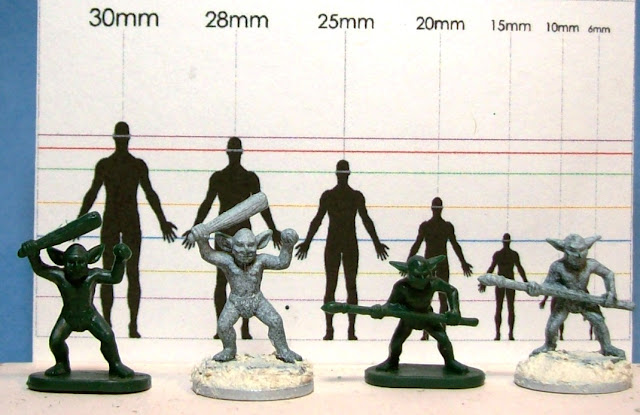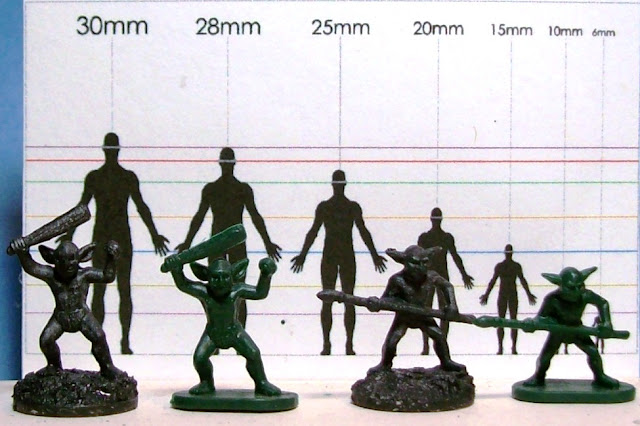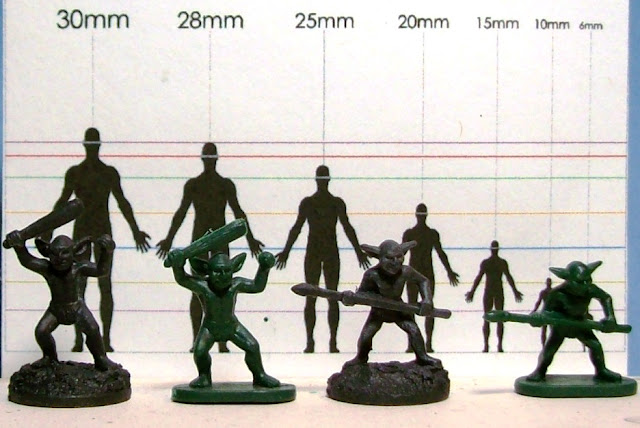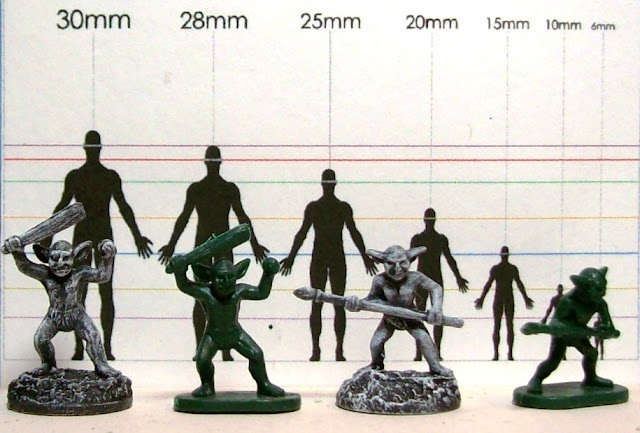I have tried several methods for priming plastic figures before I settled on this method. It is not the fastest method I have ever used to prime figures, but since I started using it in 2008, I have had zero flaking or chipping from any of the figures so primed. It relies on thin coats of flexible paint to prevent chipping and flaking. I have included copies of the unpainted figures in my photos to compare to the ones being primed.
I start by wash my figures with hot soapy water, rinse them well with hot water, and make sure they are completely dry. I then mist the figures with a light coat of white Rust-oleum Plastic Primer. The directions say to prepare new plastic by wiping it down with paint thinner, I have never bothered to do this step and it seems to work perfectly without doing it.
 |
| (Click on the image for a larger version) |
Enlarge the photo below to see how much paint I try to apply. The most important part of this step is to ensure the spray primer is not applied too thickly. Rust-oleum Primer if applied too thickly will still flake. Thin coats are the trick. Once the figure is dry, I take a soft toothbrush and buff the figures gently. It removes loose paint, smooths out the coat, and tests to make sure the paint that will not rub off or flake.
 |
| (Click on the image for a larger version) |
I then apply a thin coat of undiluted flat black latex house paint. I use just a few drops of paint per figure. I work it out into a thin coat. I use a cheap paintbrush with medium thickness plastic bristles to apply the paint, the sort of paintbrushes you give kids to do arts and crafts projects. If you look at the picture below you can see the white spray coating showing through on the figures.
Again, you are trying for a thin coat of paint not complete coverage with this coat. Once dry, I give it another buffing with the toothbrush.
 |
| (Click on the image for a larger version) |
I then apply one more thin coat of latex paint. You can see this thin coat of paint has gotten rid of the white undercoat that was visible. After drying, I brush down the figure with the toothbrush again.
The figures are now primed and are ready to paint.
 |
| (Click on the image for a larger version) |
I have one last optional step when priming my figures, I dry brush the entire figure with white paint to bring out the details to aid me in the rest of the painting progress. After dry, I will take the toothbrush to the figure one more time.
 |
| (Click on the image for a larger version) |
The figures are now completely primed and ready to be painted. At this point, I sometimes use a watered down paint or ink base coat color. Since that coat is translucent the shading given by the dry brushing shows though and gives nice shading effects with no more work than a normal base coat would take to apply, I will post another how to article later on this technique.
The important thing to remember about my priming technique is it is based on thin coats of paint. The spray primer bonds to the plastic, and the latex paint forms a coating that grips the spray primer while acting as a flexible skin that can move with the figure if it is bent or flexed. Thick coats of paint that cannot flex when the figure moves tend to crack and then flake off of the figure. I have been using this technique since 2008 and have yet to have any figure so painted chip or flake.
Questions and comments are always welcome. Thanks for reading...
 |
| Copyright © Ron Hamilton 2011, All Right Reserved. |
